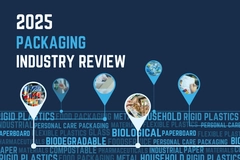Smart with age: Electronic packaging can improve older adult medication habits, study finds

25 Feb 2022 --- Older adults are open to using smart packaging to improve their medication-taking experience, a new study from the University of Waterloo, Canada, has found.
Smart packages can be used to electronically monitor when patients take their medication. When the prescription is not followed as advised by their physician, the smart system notifies patients and their caregivers.
“Medications are packaged in a variety of packaging. Not every type of packaging is smart. Some packaging can only be used with the devices they are packaged for,” Tejal Patel, University of Waterloo pharmacy professor and co-author of the study, tells PackagingInsights.
“With regards to the study we just published, the packaging has printed ink and the packaging can only be used with devices specifically made for the packages. Patients can track their medication-taking on a web-based portal.”
Improving medication-taking
The researchers say approximately half of the patients with chronic diseases in developed nations do not take their medication properly. With an aging population where taking multiple medications is common, incorrect medication-taking – called medication non-adherence – is a problem impacting patients’ health and costs the healthcare system billions of dollars.
 Patients can track their medication-taking on a web-based portal, says researcher Patel.When asked whether smart packaging can be better applied to some diseases than others, Patel says that theoretically, they should work for every disease.
Patients can track their medication-taking on a web-based portal, says researcher Patel.When asked whether smart packaging can be better applied to some diseases than others, Patel says that theoretically, they should work for every disease.
“However, some people find it more difficult than others to take their medications as prescribed by their physician.”
“The features available with these smart medication adherence technologies may help these individuals take their medication regularly, increasing their adherence to medications, which in turn improves treatment of the disease,” she adds.
There has been a surge of telehealth technology to address this issue in the last two decades, from complex at-home medication dispensing devices to reminder apps, the researchers explain.
“Many of these products are advertised as user-friendly and efficient, but not all are tested with seniors in mind. So how would we know if older adults are able to use them for their day-to-day medication intake and are there any factors that can impact their in-home utilization?” questions Sadaf Faisal, lead author of the study.
Research study
The researchers visited and studied ten participants in their homes with a mean age of 76. On average, each took 11 medications for at least five chronic diseases. The participants were provided with a smart blister pack that synchronized with a web portal and recorded each time a participant opened a blister to take medications.
The researchers then interviewed the participants to assess their experience with the smart blister package. They were also asked to rank the usability of the technology against standardized scales used in product assessment.
“Across participants, we found fairly consistent pros and cons to the technology,” says Patel.
“The ability to learn the product easily was important for the participants to use it consistently. Feedback from their social circle – such as supportive children, partners or healthcare providers – also helped reinforce using the technology,” she asserts.
In general, participants who were more comfortable with technology were more open to using and liking the smart blister pack. However, device size and lack of portability were a “significant” downside, and if the product behaved inconsistently – sending reminders one day but not another, for example – participants became frustrated.
Participants also said cost was a barrier to use and that they would be less likely to consider smart technology if it was not covered by a drug plan or funded by the government.
 Participants who were more comfortable with technology were typically more open to using and liking the smart blister pack.“For technology to be effective, it has to be accepted by the end-users,” Faisal says. “Smart, technology-based adherence products have the potential to support patients, but healthcare providers should assess older adults’ medication intake behaviors and barriers and facilitators to using a product before recommending them.”
Participants who were more comfortable with technology were typically more open to using and liking the smart blister pack.“For technology to be effective, it has to be accepted by the end-users,” Faisal says. “Smart, technology-based adherence products have the potential to support patients, but healthcare providers should assess older adults’ medication intake behaviors and barriers and facilitators to using a product before recommending them.”
Industry takeaways
Patel says in their study, the researchers identified factors that impact the integration of smart packaging and medication adherence technologies in the homes of older adults.
“We found that perceived ease of use of the technology, perceived usefulness of the packaging and technology as well as factors such as health literacy, workload involved in using the technology, emotional responses, positive and negative feedback from others, age-related changes in physical and cognition and cost drive the motivation to use these devices, which impact the intent to use the devices.”
“This research indicates that when developing these devices for use by older adults, these factors must be considered to ensure the devices are used by the population they are intended for.”
Next research steps include the continuation of “examining the use of these devices and the impact on medication-taking behaviors and disease,” concludes Patel.
By Natalie Schwertheim











